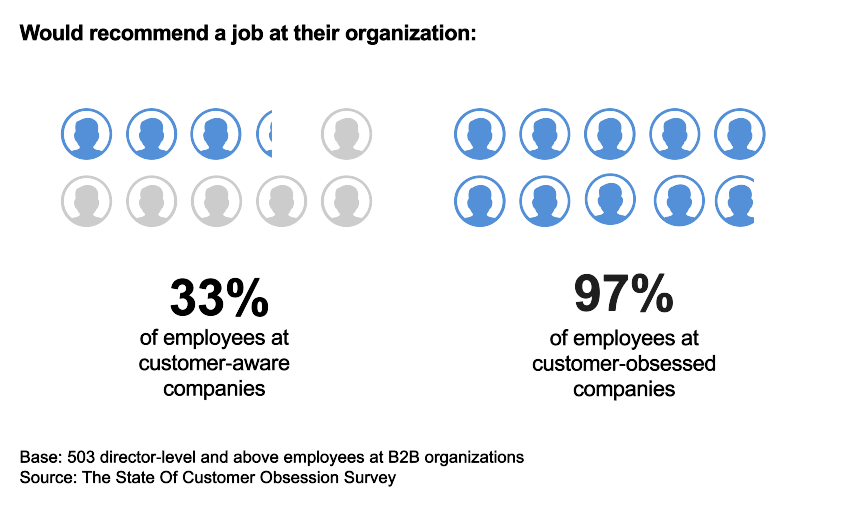How To Crack The Code On B2B Recruiting
Imagine a highly qualified candidate for an important role at your company reaches out to a current employee asking if they are happy and if they would recommend working for your organization.
Is the reply a heart emoji?
A clown face?
A teardrop?
Data from Forrester’s The State Of Customer Obsession 2021 survey demonstrates that an empowered and appreciated workforce is critical for success in B2B organizations. At B2B Summit APAC and B2B Summit EMEA, VP and Principal Analyst Rick Parrish and I will share five key areas that customer-obsessed organizations prioritize.
Why it matters: Customer-obsessed organizations consistently outperform their less mature peers in metrics such as growth, retention, product development, brand recognition, and, yes, employee engagement.
Barriers, Behaviors, And Better Resources
Customer obsession is defined as putting the customer at the center of leadership, strategy, and operations. We surveyed 503 executives at B2B organizations to understand the state of customer obsession, categorizing them from least to most mature — customer-naïve, customer-aware, customer-engaged, customer-committed, and customer-obsessed.
Strikingly, employees at customer-obsessed companies are far more likely to indicate they are happy and willing to recommend their company to others. At customer-obsessed organizations, 97% say they would recommend a job at their company, and 100% indicate employees are happy. At customer-aware organizations, those figures are 33% and 24%, respectively.

The good news: It is within the capability of most organizations to make the changes needed to drive employee engagement and satisfaction. We looked to customer-obsessed organizations for insight into some of the choices that lead to these outcomes:
- Remove barriers that prevent employees from using their best judgement vs. blindly following rules. All customer-obsessed organizations do this, and a healthy 86% of customer-committed organizations, the second-highest level of maturity, say the same. Only 10% of customer-aware organizations work to prevent these kinds of roadblocks.
- Assign role-specific, customer-loyalty-driving behaviors to every employee’s job description and performance plan. Only 8% of customer-aware organizations and less than half of customer-engaged organizations demonstrate commitment to customer obsession by giving employees measurable behaviors relevant to their role.
- Ensure that employees have the resources they need to play their part in the company’s vision to create value for customers. This data point demonstrated the largest difference between customer-obsessed and customer-aware organizations, which answered 100% and 6%, respectively. Unfunded mandates are a path to employee frustration and unhappiness.
Take our customer-obsession assessment to determine your organization’s level of maturity. And join us at B2B Summit APAC and B2B Summit EMEA to learn more about customer obsession.
